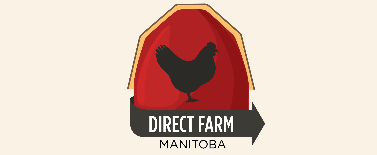Steinbach Lagoon: What to do About the Phosphorous
 Thursday, June 20, 2013 at 7:41AM
Thursday, June 20, 2013 at 7:41AM By Eric Rempel
Recently the headline in the Carillon read “Lagoon Phosphorus Levels Under Review”. This concern should take seriously indeed – for at least two reasons. The first is that phosphorous, a mineral essential for plant life, is a scarce item on this planet. The second is that excessive phosphorous disrupts the natural ecosystem. It results in algae bloom on Lake Winnipeg, destroying fish and plant life.
That's right. Phosphorous is a problem, both because there is too much of it and also because there is not enough of it. There is too much phosphorous in the Steinbach lagoon and in Lake Winnipeg, and not enough of it on the farmland of Manitoba. This problem is not unique to Steinbach, Lake Winnipeg or Manitoba. Every city and town on the planet has the challenge of what to do with the excessive phosphorous it generates, and every farmer on the planet is challenged to get enough phosphorus to the crops he is growing. The problem is inherent to the way we live. And it is serious! Nevertheless we humans have not been prepared to address this problem.
What makes Steinbach just a little unique is that the provincial permits for the new lagoon were given after we all became aware of the [phosphate] pollution problem in Lake Winnipeg. Because of that awareness, strict discharge regulations were placed on the Steinbach lagoon; regulations that, for political reasons, could not be placed on lagoons and other sewage disposal systems already in place in other towns and cities.
Let's review the fundamental problem. Nature has something we call the phosphate cycle. There is,within the soil, a limited amount of phosphate. Phosphate is essential to plant life, so as plants grow, they take up the phosphate through their roots and it becomes part of the plant tissue. When the plant dies, it decays, and this phosphate returns to the soil so it is again available to subsequent plant growth. A small variation to the cycle just described occurs when the plants are eaten by animals. In this case most of the phosphate is returned to the soil when the animal defecates. A small amount is retained within the animal if it is growing, but this also returns to the soil when the animal dies and decays.
But humans completely disrupt that cycle. We are at the top of the food chain, and our deficant is not returned to the soil. Our deficant is flushed into Lake Winnipeg! Technically we could change the way we do things, and return our human excrement to the farm fields where it is needed. Socially this is unacceptable, and no city has been willing to tackle this challenge.
Steinbach won't deal with the problem either. According the the Carillon article, the problem will be dealt with by adding chemical. But this addition of chemical won't cause the phosphorus to disappear? Of course not! It just won't be in the discharge from the lagoon. It will be at the bottom of the lagoon.
We need to tell our politicians that we want that phosphate back on the fields our food comes from. On the long run, its the only way of surviving.



Reader Comments (1)
Great article, Eric!